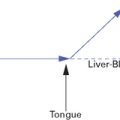 ABDOMEN
ABDOMEN
INTRODUCTION
The clinical significance of these sensations is briefly explained below. For a fuller explanation, see Part 2, Chapter 38.
PAIN
The regions of abdominal pain in Chinese medicine are as follows:
Figure 16.7 on p. 145 illustrates these areas.
Area below the xyphoid process
Epigastric pain
Hypochondrial pain
These are the two lateral areas of the upper abdomen below the rib cage.
Umbilical pain
Pain in the area around the umbilicus is common in children.
Cold in the Intestines
Spastic umbilical pain that is aggravated by cold liquids and alleviated by hot liquids, diarrhoea with pain, feeling of cold, a cold sensation in abdomen, thick white tongue coating, Deep-Wiry pulse.
Central-lower abdominal pain
The symptoms and signs discussed here are only the non-gynaecological ones. Pain in the central-lower abdominal area may of course also be due to various pathologies affecting the Uterus and the Directing Vessel. These are discussed in Chapters 84–89.
DISTENSION AND FULLNESS
Abdominal distension
Observation, Chapter 16; Interrogation, Chapter 38
Distension is the classic symptom of Qi stagnation; indeed, if there is a feeling of distension there is Qi stagnation. However, a feeling of distension may also be associated with Damp-Phlegm and, in a few cases, with a deficiency of Qi.










